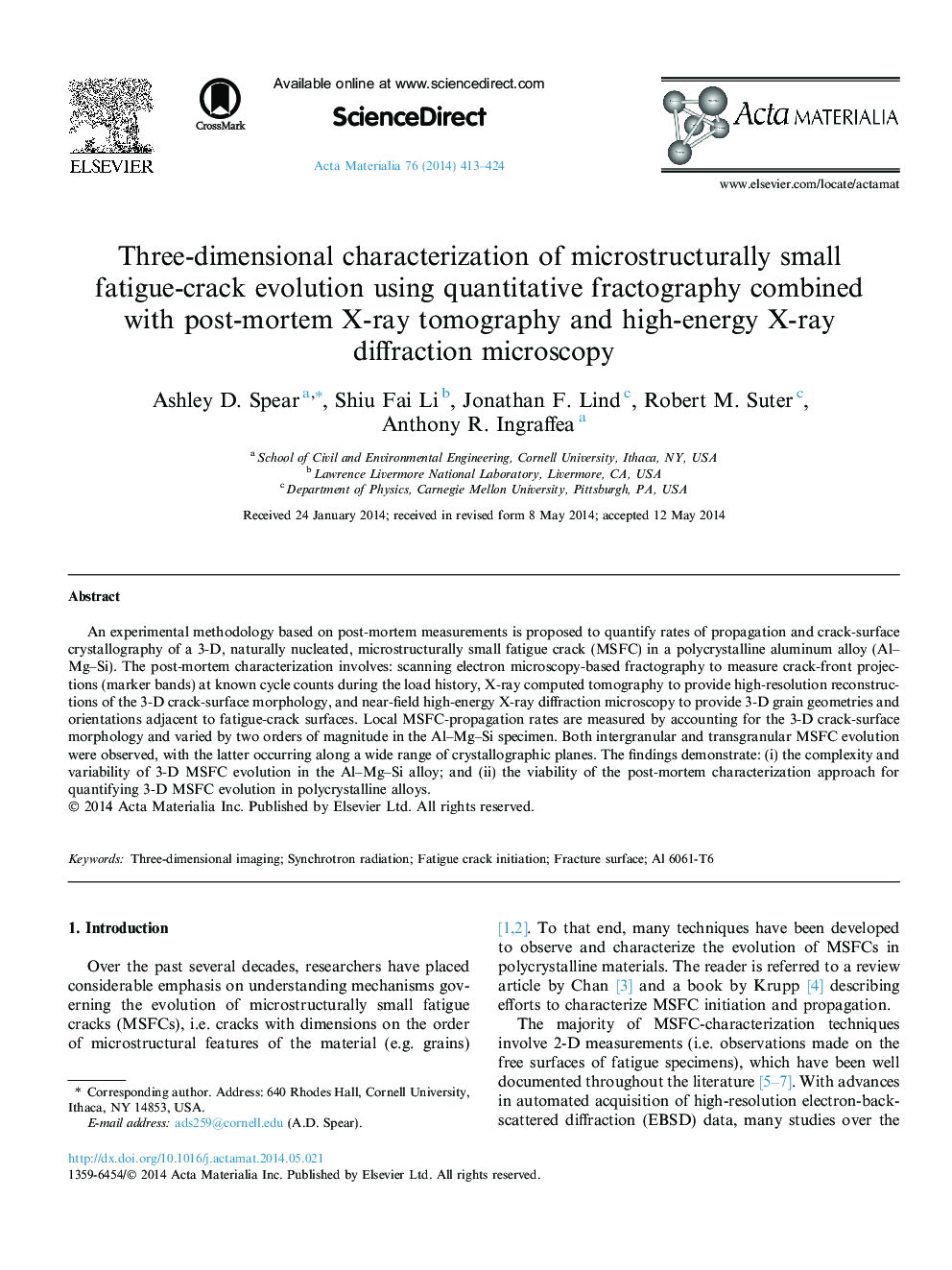| Article ID | Journal | Published Year | Pages | File Type |
|---|---|---|---|---|
| 7881598 | Acta Materialia | 2014 | 12 Pages |
Abstract
An experimental methodology based on post-mortem measurements is proposed to quantify rates of propagation and crack-surface crystallography of a 3-D, naturally nucleated, microstructurally small fatigue crack (MSFC) in a polycrystalline aluminum alloy (Al-Mg-Si). The post-mortem characterization involves: scanning electron microscopy-based fractography to measure crack-front projections (marker bands) at known cycle counts during the load history, X-ray computed tomography to provide high-resolution reconstructions of the 3-D crack-surface morphology, and near-field high-energy X-ray diffraction microscopy to provide 3-D grain geometries and orientations adjacent to fatigue-crack surfaces. Local MSFC-propagation rates are measured by accounting for the 3-D crack-surface morphology and varied by two orders of magnitude in the Al-Mg-Si specimen. Both intergranular and transgranular MSFC evolution were observed, with the latter occurring along a wide range of crystallographic planes. The findings demonstrate: (i) the complexity and variability of 3-D MSFC evolution in the Al-Mg-Si alloy; and (ii) the viability of the post-mortem characterization approach for quantifying 3-D MSFC evolution in polycrystalline alloys.
Keywords
Related Topics
Physical Sciences and Engineering
Materials Science
Ceramics and Composites
Authors
Ashley D. Spear, Shiu Fai Li, Jonathan F. Lind, Robert M. Suter, Anthony R. Ingraffea,
